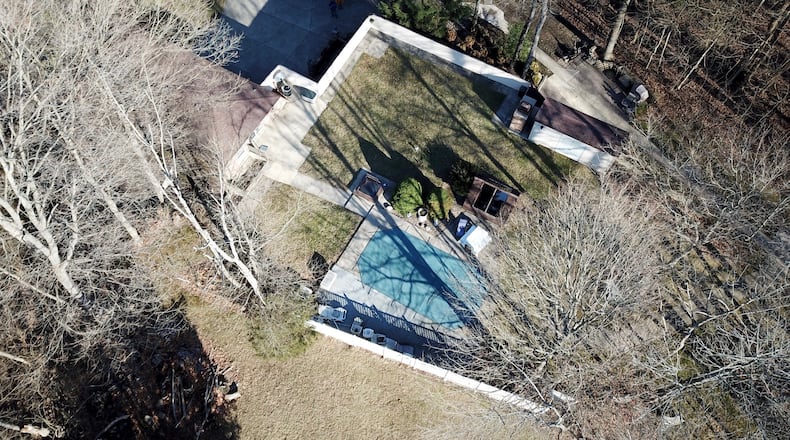From the driveway, a visitor facing the front of the house would see a porch, front door, garage and roof looking similar to most houses.
But the home is 90% earth sheltered, with several feet of sod on top and the “back yard” also being the roof of his house.
“There’s hundreds of ways to build these things, but why wouldn’t you spend a few dollars more and build something that had a facade,” Scherbauer said.
On a recent tour of the home, Scherbauer showed how sky lights and windows connecting different rooms mean plenty of natural light and an open feeling.
The home is energy efficient and he said he heats the house in the wintertime with one cord of wood.
“The house wants to head for 55 degrees, which is ground temperature,” he said.
As the U.S. Department of Energy notes on its guide to earth sheltered homes, these types of houses come with advantages and disadvantages.
Earth-sheltered homes like Scherbauers are better protected from extreme weather and temperature fluctuations compared to a conventional home. They can cost less to insure and are energy efficient.
On the other hand, they can be more expensive to build and there could be hurdles to clearing a mortgage application process.
The house was built in 1979 mostly by Scherbauer himself, with the help of local high school students, which he said kept the cost of construction down.
“When I did this one, we took our loan to the bank, and I had a rendering of it we told them that we’re building a house in the hill. And they looked at the rendering and they thought, ‘It’s a nice looking house. Oh, no problem.’ We didn’t tell him it was earth sheltered,” he said.
Scherbauer said he was interested in underground homes since college.
And he’s not the only one interested in this type of home. He said thousands of visitors tour his home through the Beachwood Homearama.
“They’d come in and say, ‘Well, this house is an underground and it looks like a regular house,’” he said.
About the Author


